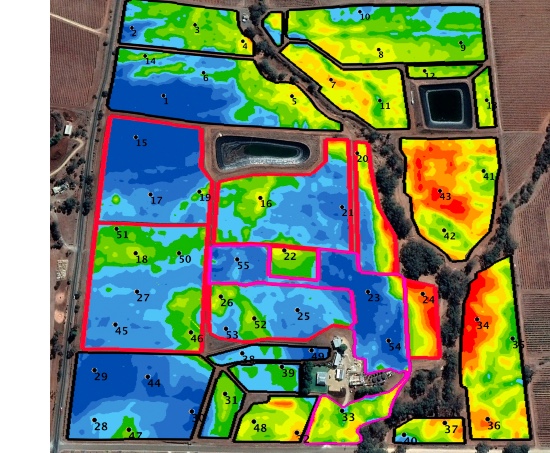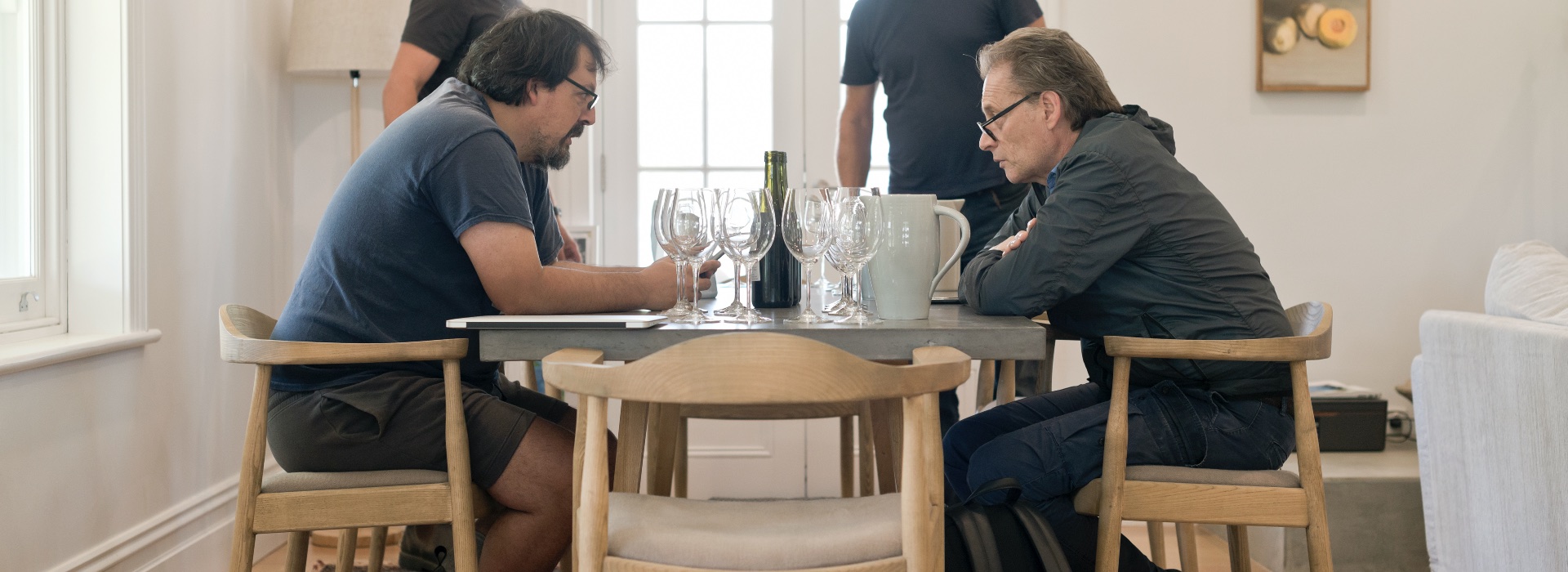POLYGON PROJECT
Since the beginning of the Alkina journey in 2015, we have worked with the goal of gaining an intimate knowledge of the land we farm and care for, believing that this knowledge would help us to do two things. The first has been to develop management practices that would improve soil health/microbiology, water management, vine health and overall biodiversity of flora and fauna, upholding the values of regenerative rather than just sustainable farming. The second has been to understand the type and scale of terroir variability across the vineyard, and in understanding this, rely less on the tools of winemaking and more on the knowledge that the secret of creating real terroir wines lies deep within the rocks and soils of our place.
In 2017 Alberto Antonini introduced us to his friend Pedro Parra, a well known terroir expert who has developed numerous terroir studies across Europe, North and South America but so far none in Australia.Pedro is Chilean and has a PhD in Terroir Viticole from Paris which allowed him to combine his background in mapping and geology with his interest in terroir winemaking and specifically the connection between soil/rock type and wine characteristics.
 We started to study our terroirs by scanning the vineyard using Electro Conductivity Mapping technology (see right). ECM scanning sends electromagnetic impulses into the ground which deliver soil reading data at two depths 75cm and 150cm (topsoil and bedrock). The maps created by this data inform us mainly of where there is change from one type of soil/clay/rock to another, with the darker blue areas suggesting increased presence of rock. It is only when Pedro studies the actual pits that we can know exactly what these changes mean.
We started to study our terroirs by scanning the vineyard using Electro Conductivity Mapping technology (see right). ECM scanning sends electromagnetic impulses into the ground which deliver soil reading data at two depths 75cm and 150cm (topsoil and bedrock). The maps created by this data inform us mainly of where there is change from one type of soil/clay/rock to another, with the darker blue areas suggesting increased presence of rock. It is only when Pedro studies the actual pits that we can know exactly what these changes mean.
After the mapping process, the next step was to excavate the soil pits for Pedro to study. The first area of focus was in the Old Quarter, a 3ha area of old vines planted with Grenache, Shiraz and Mataro in the 1960s.Pedro spent four days analyzing the pits and mapping the terroirs of this area. The result was the creation of nine individual micro-terroir polygons.
Perhaps the most fascinating part of the process was to see the extent of changes in the soil and rocks across small areas. Also known as ‘patch dynamics’ these changes from one ‘patch’ to the next are the result of more than 700 million years of changes to the physical features of the land caused mainly by tectonic plate movement and climatic change.
Various features and differences within the micro-terroirs were identified:
- Our main bedrock material is schist (a metamorphic rock) and it has varying degrees of fractures (breaks within the rocks) and ranges from highly fractured to tight/non-fractured
- Within the schist there are also varying degrees of clay present, the clay is ‘born’ from the schist, in some areas the clay exists mainly within the fractures of the schist, in other areas we have pure clays with deep or no schist present
- We also have Iron present within this mix, this can be seen in the red colour of the clay
- Within the schist and clay are ‘patches’ of Limestone containing some schist and no clay or Iron
Pedro’s Polygon mapping work separates out these areas to allow us to make the wines according to these geological ‘patches’ and to understand the results in terms of wine characteristics. With a lot of schist in the vineyard the wines have a lot of energy and what Pedro calls ‘fire’.
To cool the fire, we need to use whole bunch (30-100%) and take care not to over extract. Amongst the schist and clay there is also iron which can take away from the typicity but also add a sensation of acidity. We also have patches of Limestone which create ‘cooler’ wines than schist, showing more red fruit and chalky tannins.

